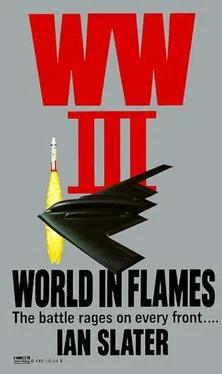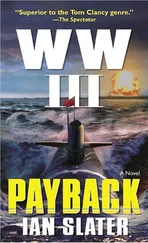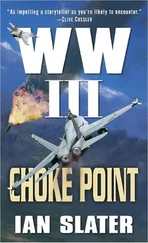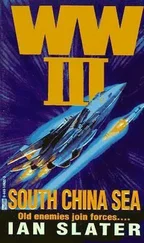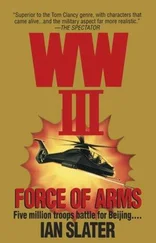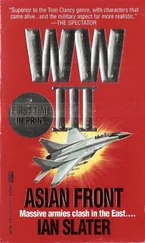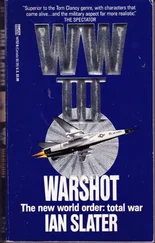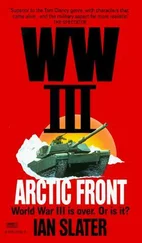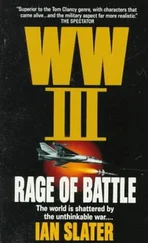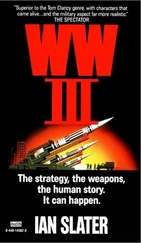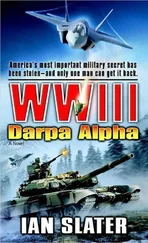“Sir, I think—” began Allet.
“Oh, yes, yes,” said Schuman, “you may get a few planes off — providing the SPETS cells in this country, who we already know have used surface-to-air Stinger missiles, don’t bring them down as they take off. Besides, it will take only one or two air bursts and the resulting electromagnetic pulse would scramble whatever networks we have remaining. There’s not enough sheathed wire in the country to prevent a wholesale screw-up.”
Mayne had never heard Schuman use anything approaching foul language.
“No,” continued Schuman morosely yet emphatically, using the tip of his cane like an exclamation point. “In the last analysis, we can really rely only on our submarines.” He turned to the CNO. “Can we get a message to them about the Korean situation vis-à-vis the use of Chinese nerve gas and U.S.A.-shell retaliation, perhaps tempting the Soviets to go nuclear in Europe?”
Admiral Horton pointed out it would be difficult to raise all of the submarines — as even in the best of circumstances, there were problems with thermal inversions, atmospheric conditions, et cetera, though he conceded submarines would certainly be alert to any massive “nuclear engagement in progress.” Air bursts above most targets, especially those on the seaboard such as New York and Boston, and in Europe above such vital ports as Portsmouth and Hamburg, would be picked up all over the world by some sub via the sound channel.
“Then,” concluded a somber Schuman, “seeing as our civilian population is without shelters of any kind against an all-out exchange, the only option we’ll have if things become unraveled is tit for tat. Instant retaliation — target for target.
The president nodded. They could hear the clock on the mantel above the fireplace. Finally it was Mayne who broke the silence. “Of course, if ‘Merlin’ succeeds, we might be off the hook — prevent Europe from turning into another Yalu.”
The chiefs were split on this. The army thought that if the SAS could eliminate the Moscow leadership, it would certainly buy time. The navy and air force, however, were still worried about the IAL—”independent launch authority”—of Soviet submarines.
“Surely to God,” said Mayne, “we must know where most of their subs are and so be ready to intercept any—”
“Most of their nukes, yes, sir,” answered Horton. “That is, we can pretty well tell you the general areas where all the nuclear subs are but, the problem is that if this—” Exhausted, the admiral tried to think of the man’s name, but the more he tried, the more it receded.
“Captain Ray Brentwood,” said Trainor.
“Yes. Well, the problem is, if his hypothesis about two diesel-electrics being close in somewhere on the West Coast is correct, we could be in a lot of trouble. Now that we’ve managed to repair the severed hydrophone arrays on the East Coast, we’ve got the situation in hand in the Atlantic. Of course, that’s where we’ve had our greatest concentration of ASW forces because of the NATO convoys. The problem in the Pacific is that they don’t have to go through anything like the Greenland-Iceland-UK Gap, where we managed to sink a lot of the Russian subs early on. -
“The assumption made by this Ray Brentwood, and I think he’s correct, is that the two diesel-electrics unaccounted for probably came out of Vladivostok, snorkeling in bad weather, when it’s hard to spot them, even by satellite, and when prop noise is difficult to pick up. Coming down from the Japanese Current into the southbound Californian Current, they’d be able to drift a ways and come in close on battery power. Their silent running, unlike that of the nukes, is really silent. At least with their nukes, our hydrophones can pick up the sound of the pumps.”
“How big are these diesel-electrics?” asked the president.
“Assuming these are the ones whose signatures we had prewar but cannot account for now, we’d say they’re probably converted Golf V-class diesel-electrics. Around twenty-seven hundred tons — three hundred and twenty-eight feet long. Carrying either one SS-N-20 or two SS-N-8 ICBMs and ten torpedoes. This Brentwood thinks they’re probably carrying the two SS-N-8s — each warhead a reentry vehicle with seven hundred and fifty kilotons. Not very fast subs, compared to the nuclear boats — seventeen knots surface, twelve to fourteen submerged.”
“But they can fire intercontinental ballistic missiles?”
“Yes, sir. This Brentwood in San Diego thought at first that the oil was accidentally discharged, as an enemy sub wouldn’t deliberately leak oil. But now he seems to think it’s the old Russian problem. Good at quantity — they made at least thirteen Golf-class subs that we know of. But they’re not good at quality. That is, the leaks were probably from either poor design or lines squeezed by the pressure on the hull.”
“You think we can find them, Admiral?”
The CNO exhaled slowly. “We can put everything in the area — saturate the coast with ASW. Drop hundreds of active sonar buoys, which will send out pulses, unlike our SOSUS arrays on the bottom. Should be able to get echoes. But we need it carefully coordinated, Mr. President. If we don’t know exactly where all our ASW ships are at any moment, one of our ships could mistake an echo from one of our own for one of the Russian subs. One thing I would recommend, Mr. President, is that we shift as many mobile surface-to-air missiles from the midwestern states to the West Coast as possible. Fly them in if necessary on Galaxy transports.”
“So that,” interjected the president, “if either of these Soviet diesels, wherever they are, do fire, we stand a chance of intercepting them?”
“That’s the general idea, sir, yes. But hopefully we can corner them before they get off any shots. If we find them, I’m sure we can sink them — their speed can’t outrun us. I’ve already ordered a cluster of surface-to-air mobiles around San Diego, Bangor, Washington State, and Norfolk sub pens. Brentwood believes San Diego is the target, and I’d go for that. I mean, with their slow speed and limited battery power, they’d have to start up engines if they were to go further north to attack targets up there.”
“If these diesel-electrics fire from close in, what’s our response time? I mean how long would we have to intercept?”
“Response time would be just about zero, Mr. President — if they’re going for targets like San Diego right on the seaboard.”
“Has this Brentwood any suggestions?”
“Yes, sir. He wants overlapping Airborne patrols up and down the coast looking for diesel oil patches.”
“Have you done it? Sounds like a good idea.”
“They’re on patrol now, sir,” reported Air Force General Allet.
“Will they be able to spot anything at night?”
“Yes, sir — infrared and patch color distinguishers are aboard as well as MAD — magnetic anomaly detectors — and sonar buoys. We’ve also got the satellites on the job, but unless the subs are near the surface, emitting heat for thermal patches, the satellites are only of limited use in this case.”
“Now, gentlemen,” said Mayne, “I don’t want any foul-ups here. From what you’ve told me, we need first-rate coordination between the navy, airborne ASW, and—”
“We’re already working on that now, Mr. President.”
“What?” Mayne’s outburst was so sharp that Trainor thought the migraine must be winning the battle. But it was plain anger, straight from the heart. “Now, don’t you boys go jurisdictional on me. There isn’t time to play bureaucratic parlor games about who’s going to be cock of the walk. I would think this Brentwood is the man for the job. Seems to me he’s made some pretty sound deductions so far. He’s been in on the ground floor. What say we appoint him?”
Читать дальше
